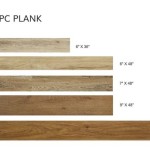Eco-Friendly Wood Flooring: A Sustainable Choice
Wood flooring has long been favored for its aesthetic appeal, durability, and timeless elegance. However, growing environmental awareness has driven a shift towards sustainable practices, leading to the rise of eco-friendly wood flooring options. Choosing eco-friendly wood flooring involves considering the source of the wood, its manufacturing process, and its impact on the environment. This article will explore different types of eco-friendly wood flooring, their benefits, and the factors to consider when making a sustainable choice.
Sustainable Wood Sourcing and Certification
The foundation of eco-friendly wood flooring lies in responsible wood sourcing. Unsustainable logging practices contribute to deforestation, habitat loss, and climate change. Therefore, selecting wood from responsibly managed forests is crucial. Certifications like the Forest Stewardship Council (FSC) are instrumental in ensuring that wood products originate from forests that adhere to stringent environmental and social standards.
The FSC certification process involves rigorous assessments of forest management practices, including timber harvesting, biodiversity conservation, and the protection of indigenous peoples' rights. When purchasing FSC-certified wood flooring, consumers can be confident that the wood comes from forests managed in an environmentally sound and socially responsible manner. Other certifications, such as the Sustainable Forestry Initiative (SFI), also provide assurance of sustainable forest management, although their standards and scope may differ from FSC.
Beyond certifications, understanding the origin of the wood is equally important. Locally sourced wood reduces transportation distances, minimizing the carbon footprint associated with shipping. Supporting local sawmills and suppliers can also help bolster regional economies and promote sustainable forestry practices in the local area. Transparency in the supply chain is key, allowing consumers to trace the wood's journey from the forest to their homes.
Types of Eco-Friendly Wood Flooring
Several types of wood flooring can be considered eco-friendly, each with its own unique characteristics and environmental benefits. These include reclaimed wood, bamboo, cork, and certain types of engineered wood.
Reclaimed Wood: Reclaimed wood is sourced from old buildings, barns, and other structures that are being demolished or renovated. By repurposing existing wood, reclaimed wood flooring minimizes the need to harvest new trees, conserving forest resources and reducing landfill waste. Reclaimed wood often possesses a unique character and historical charm, adding a distinctive aesthetic to any space. However, it's essential to ensure that reclaimed wood is properly treated to remove any lead paint or other contaminants that may be present.
Bamboo Flooring: Bamboo is a rapidly renewable resource that grows much faster than traditional hardwoods. Bamboo flooring is typically made from bamboo stalks that are harvested and processed into planks. While bamboo flooring offers a sustainable alternative to hardwood, it's essential to consider the manufacturing process and the adhesives used. Look for bamboo flooring that is certified by reputable organizations and uses low-VOC (volatile organic compound) adhesives to minimize indoor air pollution.
Cork Flooring: Cork is harvested from the bark of cork oak trees without harming the tree itself. The bark regenerates over time, making cork a highly renewable resource. Cork flooring is naturally insulating, sound-absorbent, and resilient. It is also hypoallergenic and resistant to mold and mildew. When selecting cork flooring, consider the adhesives and finishes used, opting for low-VOC options to ensure indoor air quality.
Engineered Wood Flooring: Engineered wood flooring consists of a thin layer of hardwood veneer bonded to a core of plywood or fiberboard. The use of a thin veneer reduces the amount of hardwood required, making it a more resource-efficient option compared to solid hardwood flooring. However, the environmental impact of engineered wood flooring depends on the type of core material used and the adhesives used to bond the layers together. Look for engineered wood flooring with FSC-certified wood veneers and low-VOC adhesives.
Installation, Maintenance, and End-of-Life Considerations
The environmental impact of wood flooring extends beyond the sourcing and manufacturing stages. Installation, maintenance, and disposal also play a role in its overall sustainability. Sustainable installation practices include using low-VOC adhesives, minimizing waste, and properly disposing of any leftover materials.
For adhesives, it is important to research and select options that are certified by third-party organizations like Greenguard, which certifies that products have met strict chemical emissions standards. Minimizing waste can be achieved through accurate measurements and careful cutting techniques. Contractors should have policies in place for recycling or responsibly disposing of any leftover wood or packaging.
Proper maintenance can significantly extend the lifespan of wood flooring, reducing the need for replacement. Regular cleaning with gentle, environmentally friendly cleaning products can help maintain the flooring's appearance and prevent damage. Avoid harsh chemicals or abrasive cleaners that can harm the finish. Refinishing wood flooring instead of replacing it can also save resources and reduce waste. Opt for low-VOC finishes and sealants to minimize indoor air pollution.
At the end of its life, wood flooring can be recycled or repurposed. Reclaimed wood flooring can be salvaged and reused in other construction projects. Wood flooring can also be chipped and used as mulch or compost. Proper disposal of wood flooring prevents it from ending up in landfills, reducing environmental impact. Donating usable flooring to organizations like Habitat for Humanity is another environmentally responsible disposal method.
Choosing eco-friendly wood flooring requires careful consideration of various factors, from sourcing and manufacturing to installation and disposal. By prioritizing sustainable practices, consumers can enjoy the beauty and durability of wood flooring while minimizing their environmental footprint. Selecting certified wood products, exploring alternative materials like bamboo and cork, and adopting responsible installation and maintenance practices are all steps towards making a more sustainable choice.
The long-term benefits of investing in eco-friendly wood flooring extend beyond the individual homeowner. By supporting sustainable forestry practices and reducing the demand for unsustainably harvested wood, consumers can contribute to the preservation of forests, the protection of biodiversity, and the mitigation of climate change. The cumulative impact of individual choices can drive positive change in the wood flooring industry and promote a more sustainable future.
The cost associated with eco-friendly wood flooring can sometimes be higher initially compared to conventional options. However, it's essential to consider the long-term benefits and value proposition. Eco-friendly wood flooring often boasts superior durability and longevity, reducing the need for frequent replacements. The health benefits of choosing low-VOC products can also translate into lower healthcare costs over time. The environmental benefits and ethical considerations associated with sustainable choices further enhance the value of eco-friendly wood flooring.
Staying informed about the latest advancements in sustainable wood flooring technology and practices is crucial for making informed decisions. Researching different brands, reading product reviews, and consulting with knowledgeable flooring professionals can help consumers navigate the complexities of the market. Engaging with environmental organizations and industry groups can provide valuable insights into emerging trends and best practices. By embracing a proactive approach to sustainability, consumers can contribute to a more environmentally responsible and ethical wood flooring industry.

Eco Friendly Wood Flooring The 6 Most Sustainable Choices Modernize

Sustainable Wood Flooring 11 Great Options More Floorings

Engineered Wood Flooring An Eco Friendly Option For Houses Blog Mikasa Floors

Eco Friendly Choice Sustainable Wooden Flooring

Eco Friendly Flooring Options What To Choose From The Forest Llc

6 Eco Friendly Flooring Options For Any Home

Best Ideas For Eco Friendly Flooring Top Sustainable Inc

5 Reasons Why You Should Invest In Eco Friendly Flooring

Is Laminate Flooring Eco Friendly How To Buy

What Are The Best Eco Friendly Flooring Options
Related Posts








